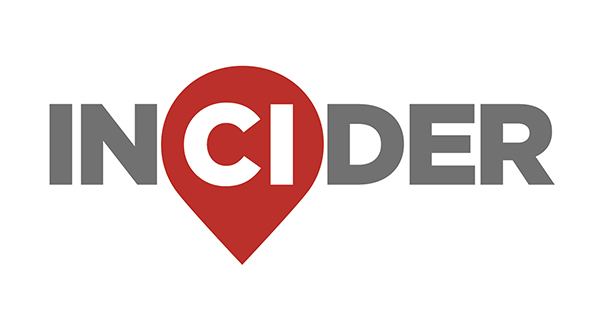Coulter said she can’t help but worry about another hurricane hitting her home, all while she watches her insurance rates continue to climb. Texas has some of the highest home insurance premiums in the nation, per the National Bureau of Economic Research, falling behind only Florida and Louisiana.
Coulter said she estimates her home insurance costs have risen nearly 400% in the last four or five years. The homeowner said she sees an almost $1,000 annual increase on her premium, if not more than that.
“I think the whole area is at risk, and it makes living here just become more difficult,” Coulter said.
Greater Houston area insurance rates rank near the top of the state, causing some in the Lake Houston area to forgo insurance. Meanwhile, some insurance companies are leaving the market due to risk.
The background
Coulter, who’s been a Kingwood resident since 2007, said she had a new roof put on her home in December and still lost out on her insurance policy renewal. She said she’s had to find different insurance carriers because others stopped writing policies.
“We’re starting to get down to very limited options as far as carriers,” Coulter said. “If we get hit by anything this hurricane season, then I think we’re in a real jam.”
Since 2003, Texas has used a file-and-use system for home insurance, which allows insurance companies to issue higher rates without state approval as long as they notify the state, according to the Texas Department of Insurance.
“They could just slide an envelope across the desk at [the TDI] and tell them, ‘This is what we’re charging,’ and then put that into practice immediately,” said Ware Wendell, executive director of Texas Watch, which is an organization that monitors insurance practices in the state.
It’s incumbent upon the TDI to challenge hikes that don’t comply with state law, Wendell said. Of the more than 2,300 rate filings the TDI reviewed in 2024, none were disapproved, according to the TDI.
From 2022 to 2023, insurance premiums in Texas increased by 23%, marking the highest rise in the nation in that timespan. This is higher compared to the national average increase of 11%, according to a report from S&P Global, a company that specializes in information and analytics around finance and business.
In Harris and Montgomery counties, home insurance rates rose 28% and 31% between 2020-23, respectively, according to the National Bureau of Economic Research.
Jeanna Bumpas, an independent producer with Helix Insurance Group who works in the Lake Houston area, said as there are more claims made due to more severe weather, reserves at insurance companies get depleted and have to be built back up, which can increase premiums. She said the economy is also driving up insurance premiums.
John Cobarruvias, a state consumer advocate, said he feels price increases from contractors are a cause for rising insurance costs. The cost of repairing items such as roofs or other structural aspects of a home have risen over the past decade, he said, which in turn drives up insurance costs.
Insurance companies have reported they’re facing risks, such as natural disasters and the lingering impact of the pandemic on material costs.
“As far as affordability, we are seeing that the premiums for insurance are increasing quite a bit,” Bumpas said.
“My home flooded during Harvey. ... We replaced every single interior door in the house with the door jamb. At that time, one door [and] one door jamb was $57,” Bumpas said. “Five years later, I went to the same supplier, picked up just the door—not the door jamb—and it was $109.”
Bumpas said insurance companies are having to increase the replacement cost for homes, which drives up the carrier’s premium.
Carriers have increased the premiums of their policyholders nationwide; however, the Houston area has experienced dramatic increases as analysts deem the area “high risk,” said Laura Crain, president of Crain Insurance Group.
Like its predecessors such as Harvey and Winter Storm Uri, Hurricane Beryl caused billions of dollars in damage in July 2024, according to property analytics firm CoreLogic.
In December, the U.S. Senate Committee on the Budget published nonrenewal rates, confirming areas most vulnerable to climate-related risks have the highest nonrenewal rates and the most significant rate increases.
While Harris County had a lower nonrenewal rate than neighboring coastal counties, its nonrenewal rate was higher than those further inland to the north, according to the report.At the Capitol
To help solve the issue, the Texas Legislature recently passed a few bills during its 89th session, including House Bill 2067 from Rep. Dennis Paul, R-Clear Lake, which requires insurers to provide a reason for when they decline, cancel or don’t renew a policy.
Gov. Greg Abbott signed HB 2067 into law June 20, effective Jan. 1. Paul said he hopes the legislation will hold insurance companies accountable while also assisting the state in determining why companies are dropping customers.
Some, including Cobarruvias, said they don’t feel this approach will help because it doesn’t directly deal with rate increases. However, Paul said the state is limited in its ability to address the issue.
Paul said he feels the state needs to incentivize competition to attract more insurance companies to spread out the risk and potentially lower rates. He said he believes the state setting direct rates or limiting increases could cause companies to leave.
“Having government interference come in and set a rate is a total disaster,” he said.
The conditions
In Texas, 160 companies offer homeowners insurance policies, which is a 20% increase compared to a decade ago, according to the TDI. In 2023, insurance companies sold more than 8.7 million policies in Texas—up 35% from 2013.
Still, insurance companies are struggling in Texas, according to filings from multiple insurance companies. In 2022, the San Antonio-based United States Army Automobile Association, or USAA, reported the first loss in its 102-year history, according to the insurer’s 2022 annual report.
Statewide, home insurers have paid out more than they collected annually in years that correspond with natural disasters such as Hurricane Harvey and Winter Storm Uri.
Other insurance companies are limiting the policies they write in Texas, filings show.
“Our advice to consumers is to keep shopping,” TDI Communications Specialist Ben Gonzalez told Community Impact in an email.Looking ahead
According to a June 17 report, Rice University’s Kinder Institute of Urban Research experts recommend data-driven infrastructure planning and accurate flood risk mapping to address climate risks across Harris County, where more than 20% of all housing units are in major flood areas.
Hurricane season tips from the TDI include:
- Shop for windstorm insurance if it’s not included in your home insurance policy.
- Consider comprehensive coverage car insurance, which covers vehicular damage from flood, hail, fire and wind.
- Have physical and digital copies of important documents, such as your policy’s declaration page and ID cards for auto and health insurance.
- Consider flood insurance sooner rather than later as flood policies usually take effect 30 days after purchase.
- Evaluate your home’s roof and windows; repairs and reinforcement ahead of a storm could save you money later.
- Take inventory of your home in case an insurance claim needs to be filed later.
- Build an emergency go kit stocked with water, food, medicine, clothes, pet food and other vital supplies.






